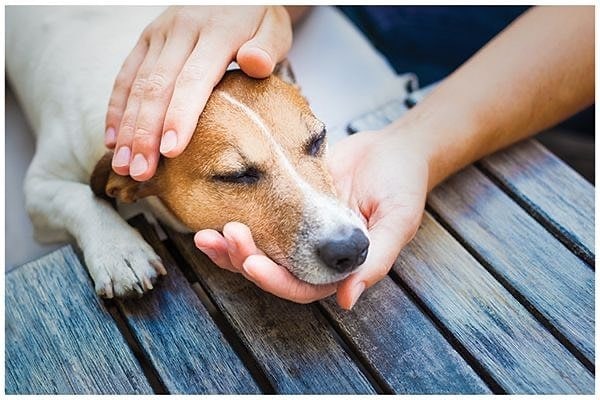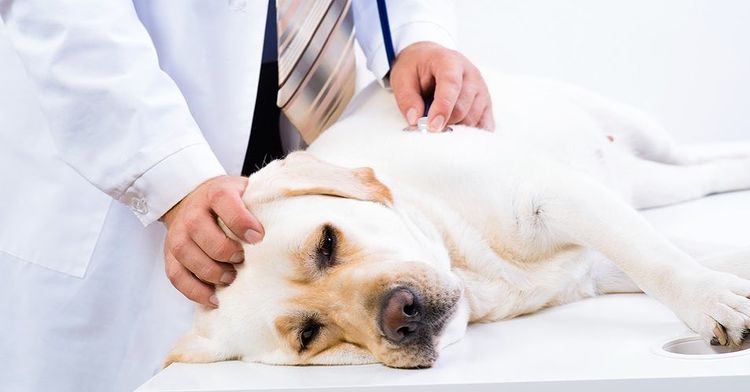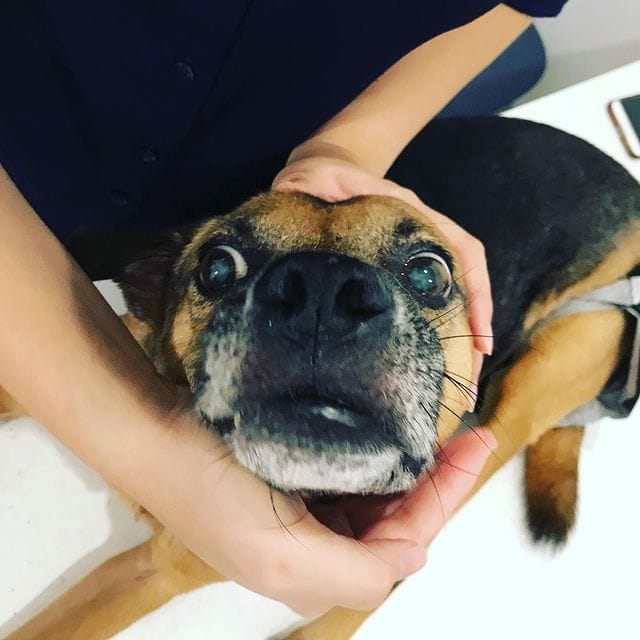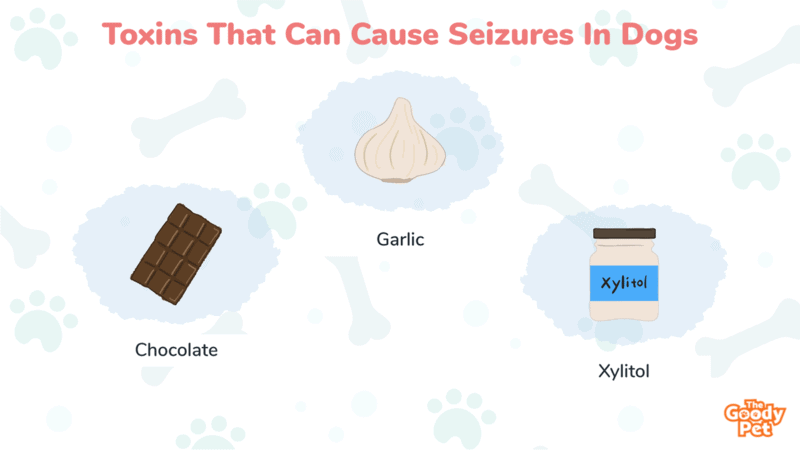With the sheer amount of substances that can be potentially harmful to dogs, keeping our canine buddies safe is no easy task and one that isn’t made easier by the fact that some common dog toxins are items commonly found in homes.
So, what are these toxins that can cause seizures in dogs? Common household products that contain toxins that are usually responsible for canine seizures include xylitol, alcohol, onions, sugar, human medication, chocolate, insecticides, rodenticides, and some household plants.
Simply put, a canine seizure is a convulsion or fit caused by a temporary and involuntary disturbance of a pooch’s normal brain function. Most times, seizures don’t just occur for no reason, and they happen either because your canine buddy has ingested something toxic or is suffering from an underlying medical condition.
Recognizing the signs that your pooch is suffering a seizure, as well as knowledge of what to do when a dog is suffering a seizure from ingesting a toxic substance, is crucial in preserving your canine buddy’s life. And these signs of canine seizures as well as available treatment methods, are clearly explained in this article. However, before we go into all that, let’s take a look at the comprehensive list of toxins that can induce seizures in dogs.
What Toxins Can Cause Seizures In Dogs?

Toxins that typically cause seizures in dogs include xylitol, chocolate, human medication, vegetables such as garlic and onions, insecticides, house cleaners, alcohol, and certain household plants.
Xylitol
Top on the list of toxins that are responsible for poisoning dogs and inducing seizures is xylitol, a natural sugar substitute. Xylitol is commonly found in food products such as sugar-free gum, candies, peanut butter, and toothpaste. It also occurs naturally in berries, plums, corn, oats, and mushrooms.
While it is safe for consumption in humans and is found in common household items, xylitol is extremely toxic for dogs to consume, and this is because it triggers a potent release of insulin from a dog’s pancreas.
This sudden rush of insulin release from the canine pancreas triggers a rapid drop in the dog’s blood sugar level, which, apart from inducing seizures, can also be life-threatening to a dog.
Chocolate
Beloved human treat, chocolate, is another substance that can cause seizures in dogs when ingested. Chocolate contains an active ingredient, theobromine, and it is this that poses the most danger of poisoning to dogs.
Theobromine content varies according to the type of chocolate, and darker chocolates, typically containing between 130 to 450 mg of theobromine per ounce, are extremely dangerous for dogs to consume.
Theobromine is toxic to dogs because their body systems are not suitably equipped for the metabolism of this product, and when consumed, even in little quantities, theobromine can induce seizures, muscle tremors, heart failure, an increased heart rate, excessive urination, and diarrhea, just to mention a few.
Human Medication
Drugs that are beneficial and potentially life-saving to humans typically have the opposite effects when consumed by our canine buddies. The human and canine bodies process substances differently, and drugs that would be otherwise beneficial to humans can trigger side effects such as seizures when consumed by dogs.
That said, some of the human medications that pose the most threat to dogs include nonsteroidal anti-inflammatory drugs such as ibuprofen and naproxen, antidepressants, and acetaminophen, just to mention a few.
For a comprehensive list of human drugs that are dangerous for dogs to consume, you can refer to this article by the American Kennel Club (AKC).
Garlic And Onions
Vegetables, such as garlic and onions which are widely used in preparing human food, contain toxins that can cause serious complications when consumed by dogs.
Onions contain a toxic substance known as N-propyl disulfide, which causes a breakdown of the dog’s red blood cells, as well as seizures. All components of the onion plant – leaves, bulb, root – are dangerous for consumption by dogs, and it only takes 3.5 oz of onion per 40 lbs of a dog’s weight to induce onion poisoning in dogs.
Similar to onions, garlic contains the toxin thiosulfate that can cause oxidative damage to the canine red blood cells when ingested, and it is also said that garlic is five times more dangerous than similar quantities of onions!
As a reference, studies have revealed that it takes just between 0.5 to 1 oz of garlic for every 2 lbs of a dog’s body weight to poison a pooch.
Insecticides And Rodenticides
Insecticides and rodenticides that are typically used to control the insect and rodent population in the home can be extremely toxic and fatal when consumed by dogs. The symptoms of toxin poisoning from exposure to these substances typically depend on the type of product, but most dogs will experience seizures.
What makes items such as bug sprays dangerous for dogs is that they don’t particularly need to be ingested by pooches, and just by getting a whiff of these products, our canine buddies can suffer symptoms, such as seizures, that are consistent with toxin poisoning in dogs.
Household Cleaners
Household cleaners are also extremely toxic to pooches, and apart from inducing seizures when ingested, consumption of these household cleaners can also result in gastrointestinal upsets and respiratory problems for our canine buddies.
Examples of household cleaners that contain toxins such as ammonia and chlorine that are poisonous to dogs include toilet bowl cleaners, disinfectants, window cleaners, drain cleaners, and rust removers, just to mention a few.
Alcohol
Similar to other items on this list, alcohols such as ethanol are present in alcoholic beverages, ethylene glycol, which is present in antifreeze, isopropanol used in formulating rubbing alcohol, and methanol which is typically found in paints, varnishes, and adhesives, contain toxins that are poisonous to dogs when consumed.
Consumption of alcohol by dogs – even if it’s just a sip – can result in alcohol poisoning, and this typically results in the manifestation of symptoms such as seizures, increased body temperature, disorientation, and vomiting, just to mention a few.
Household Plants
While they may be pretty and undeniably make our environments more beautiful, some household plants are not safe to cultivate in a home with dogs and are incredibly poisonous when consumed by our furry friends.
Some of the common household plants that can result in toxin poisoning, and subsequent seizures, when ingested by dogs include rhododendrons, tulips, daffodils, sago palms, and azaleas.
What Are The Signs Of Seizures Caused By Toxin Poisoning In Dogs?

Some of the common signs exhibited by a pooch that is suffering seizures from toxin poisoning include anxiety, confusion, violent shaking and body tremors, as well as breathing difficulties.
Anxiety
Dogs can usually tell that they’re about to suffer a seizure before it happens, and one of the first signs that your dog is about to suffer a seizure due to toxin poisoning is a visible display of nervousness by the pooch.
Dogs typically exhibit anxiety by panting, pacing around the house, shivering, cowering in the corner of the house, and repeatedly attempting to run away.
Confusion
In addition to becoming anxious, a dog suffering from a seizure may become disoriented and unable to make its way around familiar environments without crashing into objects. The dog will also look dazed, walk around in circles and also be temporarily blind in the moments after a seizure episode.
Shaking And Body Tremors
This is the most obvious sign exhibited by dogs suffering seizures, and it is often characterized by muscle twitching, jerking, and stiffening of the body. Dogs suffering seizures may also fall to the side and make paddling motions with their legs.
Breathing Difficulties
Dogs suffering from seizures due to toxin poisoning usually find it difficult to breathe during their episodes, and this breathing difficulty is usually accompanied by excessive panting and the excretion of saliva from the pooch’s mouth.
What Can I Do When My Dog Is Suffering Seizures From Ingesting Toxins?
If you observe your dog suffering from seizures, you have to immediately call your vet for further instructions while ensuring to place the toxin well out of the dog’s reach, as well as clearing the environment of potentially harmful objects and keeping the dog calm and cool.
Call Your Vet
The first thing to do if you notice repeated seizures due to toxin poisoning in your canine buddy is to immediately place a call explaining the symptoms to your vet and book a hospital appointment as soon as possible! And if you can’t get in contact with your vet, you can also try contacting the pet poison helpline, as they can provide guidelines on how to proceed.
Time is of the essence with toxin poisoning, and every second you spend without action is indirectly putting your canine buddy in more danger. Don’t try to induce vomiting in your dog without a vet’s instructions, as this can significantly worsen the situation.
Common treatment methods of canine toxin poisoning by vets include:
- An attempt to induce vomiting in the dog.
- Counteracting the effects of the toxin by offering an antidote.
- Giving the dog activated charcoal to make it harder for the toxins to be absorbed by the pooch’s body.
- Surgery or endoscopy to remove certain toxins.
Additionally, your vet may also prescribe the use of anticonvulsants, such as phenobarbital and potassium bromide, and it is often advised that, once you start your dog on an anticonvulsant, you have to continue giving this drug for life.
Withdrawing your dog from an anticonvulsant medication can place a dog at risk of suffering more serious seizures in the future.

Keep Calm
While preparing for the trip to your vet’s, it will help to stay calm and not do anything that’ll agitate your pooch. An inability to keep calm when your dog is suffering from a seizure can result in the dog becoming agitated, and in the process, inflicting physical damage on itself during the period of agitation.
You should also, as a matter of urgency, keep whatever toxin your canine buddy may have ingested out of the pooch’s reach to prevent further consumption of the substance in question.
Clear The Environment
Once your dog starts experiencing seizures, you should immediately scan the environment and put away objects that can cause harm to the Fido while it is in its frenzied state. If your pooch’s seizures take place while the dog is near the stairs, you can try to gently move the dog away to prevent the pooch from falling down the stairs.
Try Calming The Dog
In addition to maintaining a calm disposition during your canine buddy’s seizure episode, you can also try speaking in a gentle, comforting tone to the pooch. Some dog owners have even reported that playing low music to their dogs, as well as gentle stroking, also has calming effects on pooches that are suffering from seizures due to poisoning.
Keep Your Dog Cool
Seizures typically cause a dog’s body temperature to spike dangerously high. Hence, when your dog comes around after suffering a seizure, you can wrap wet clothes around the pooch’s feet in a bid to lower its temperature.
How Can I Prevent My Dog From Suffering Seizures From Toxins?
You can prevent your dog from suffering seizures from toxin poisoning by restricting your canine buddy’s access to these substances.
Minimize Exposure To Dangerous Substances
The surest way to prevent your dog from suffering seizures due to exposure to dangerous toxins is by putting measures in place to eliminate your canine buddy’s exposure to these substances.
- Keep the human medication in drug cabinets that are placed well out of your dog’s reach, and make sure to immediately search for and retrieve any pill that mistakenly drops. The same applies to rodenticides, as well as flea and tick products – ensure to keep these items in areas that are inaccessible by your Fido.
- Resist the urge to feed your canine buddy with table scraps, as most of the substances that are fit for human consumption are usually dangerous for dogs to eat.
- Take note of, and avoid cultivating household plants that are toxic to dogs; however, if you wish to cultivate these plants, you should construct fences to restrict your canine buddy’s access to the plants.






